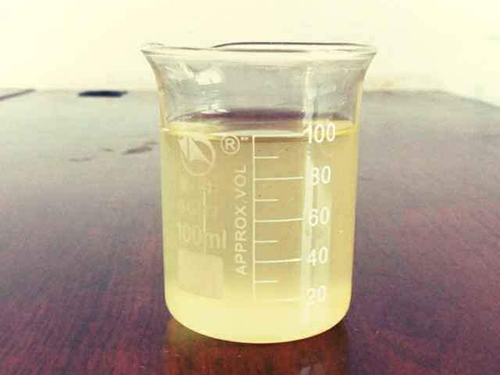Synthesis and Applications of Dodecyl Dimethyl Benzyl Ammonium Chloride in Diverse Industries
The Role of Dodecyldimethylbenzylammonium Chloride in Modern Chemistry and Industry
Dodecyldimethylbenzylammonium chloride, often referred to in the chemical community as DDAB, is a quaternary ammonium compound that has gained significant attention due to its versatile applications in various industries. With a long hydrocarbon chain of twelve carbon atoms, DDAB possesses unique properties that make it a valuable agent in multiple domains, including pharmaceuticals, cosmetics, and disinfectants.
Chemical Structure and Properties
DDAB is classified as a surfactant due to its amphiphilic nature, wherein one part of the molecule is hydrophilic (water-attracting) while the other is hydrophobic (water-repellent). This duality enables it to reduce surface tension between different substances, facilitating emulsification and solubilization. Its chemical formula provides insights into its properties; the dodecyl group contributes to its lipophilic characteristics, while the benzyl and dimethyl ammonium parts confer positively charged sites that interact with negatively charged particles.
The solid-state form of DDAB typically appears as a white powder or crystal that easily dissolves in water and organic solvents. Its solubility and stability are key attributes that enhance its usability across a range of formulations. Additionally, DDAB exhibits biocidal properties, making it an effective antimicrobial agent against a variety of pathogens, including bacteria and fungi.
Applications in Pharmaceutical and Cosmetic Industries
In the pharmaceutical realm, DDAB serves as a critical component in drug formulations. Its surfactant properties assist in the creation of micelles that encapsulate drugs, improving their solubility and bioavailability. This encapsulation is particularly beneficial for hydrophobic drugs that struggle to dissolve in water, allowing for enhanced therapeutic efficacy.
Similarly, the cosmetic industry harnesses the benefits of DDAB for emulsions and creams. Its ability to stabilize oil-in-water emulsions allows for the creation of smooth and pleasing textures in lotions and creams. Furthermore, its antimicrobial properties contribute to preservative formulations, ensuring product longevity and safety for consumers.
In hair care products, DDAB acts as a conditioning agent, imparting a smooth texture and reducing static cling. Its effectiveness in cleansing products is also notable, where it functions as a mild surfactant, helping to remove dirt and oils from hair and skin without causing irritation.
dodecyldimethylbenzylammonium chloride

Usage in Disinfectants and Sanitizers
One of the most notable applications of dodecyldimethylbenzylammonium chloride is its role in disinfectants and sanitizers. Given the increased global focus on hygiene and disease prevention, particularly in the wake of the COVID-19 pandemic, the demand for effective antimicrobial agents has surged. DDAB fits the bill as a potent antiseptic and germicidal agent, demonstrating effectiveness against a wide range of microorganisms.
The biocidal activity of DDAB enables it to be used in surface disinfectants, hand sanitizers, and various cleaning products. Its ability to denature bacterial proteins and disrupt cell membranes makes it a valuable asset in formulations aimed at maintaining cleanliness and reducing the risk of infection in both commercial and residential environments.
Environmental and Safety Considerations
While DDAB has numerous applications, it is essential to consider its environmental impact and safety profile. Quaternary ammonium compounds (QACs), including DDAB, have raised concerns regarding their potential toxicity to aquatic life when released in large quantities. Moreover, there is an increasing dialogue within the scientific community regarding the development of alternative agents that pose less risk to the environment while maintaining efficacy.
In terms of safety, DDAB has been shown to be relatively safe for use in concentrations typically found in consumer products. However, like all chemical agents, it must be handled with care, adhering to recommended guidelines to avoid adverse effects.
Conclusion
Dodecyldimethylbenzylammonium chloride exemplifies the multifaceted utility of quaternary ammonium compounds in contemporary chemistry and industry. Its applications range from pharmaceuticals and cosmetics to disinfectants, underscoring its versatility. As industries continue to evolve and the focus on safety and environmental sustainability increases, further research and development may yield even more innovative uses for DDAB while addressing associated concerns. The future of this compound undoubtedly remains bright, with ongoing studies exploring its potential advantages and safer applications within the chemical landscape.
-
Water Treatment with Flocculant Water TreatmentNewsJun.12,2025
-
Polymaleic AnhydrideNewsJun.12,2025
-
Polyaspartic AcidNewsJun.12,2025
-
Enhance Industrial Processes with IsothiazolinonesNewsJun.12,2025
-
Enhance Industrial Processes with PBTCA SolutionsNewsJun.12,2025
-
Dodecyldimethylbenzylammonium Chloride SolutionsNewsJun.12,2025





